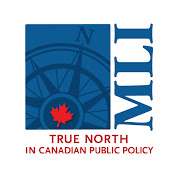Creating a comprehensive sales skills training program involves several key components, including identifying skill gaps, developing a curriculum, employing effective training methods, and evaluating the program’s success. Below is an outline for a successful sales skills training program:
1. Needs Assessment
dentify Target Audience: Understand the experience level of participants (new hires, experienced salespeople).
Conduct Surveys/Interviews: Gather feedback from current sales staff to identify skill gaps.
Set Objectives: Define clear objectives for what the program should achieve.
2. Curriculum Development
Sales Fundamentals:
Understanding the sales process (prospecting, qualifying, presenting, closing, and follow-up).
Building product knowledge and understanding customer needs.
– Communication Skills:
– Active listening techniques.
– Adapting communication style to different customer personas.
– Relationship Building:
– Techniques for building rapport and trust.
– Networking strategies.
– Sales Techniques:
– Consultative selling vs. transactional selling.
– Handling objections and closing techniques.
– Use of Technology:
– CRM tools and sales automation software.
– Utilizing social selling through platforms like LinkedIn.
3. Training Methods
-Workshops: Interactive sessions that include role-playing and group discussions.
– E-Learning Modules: Flexible online courses that participants can complete at their own pace.
– On-the-Job Training: Pairing less experienced salespeople with veterans for mentorship.
– Webinars: Subject matter experts presenting on specific topics within sales techniques.
4. Practice and Reinforcement
– Role Plays: Simulated sales calls to practice skills in real-world scenarios.
– Case Studies: Analyzing successful sales strategies from industry leaders.
– Feedback Sessions: Constructive criticism to help improve techniques and approaches.
5. Evaluation and Metrics
– Pre- and Post-Training Assessments: Measure knowledge and skills before and after the program.
– Sales Performance Metrics: Track sales figures, conversion rates, and customer feedback.
– Ongoing Support: Provide resources for continuous learning and follow-up training sessions.
6. Continuous Improvement
– Collect Feedback: Regular feedback from participants to refine the program.
-Stay Updated: Adjust content based on market changes, new technologies, and emerging sales strategies.
Final Considerations
– Scheduling and Timing: Ensure that training is scheduled for optimal attendance and participation.
– Cultural Sensitivity: Design training to consider the diverse backgrounds and cultures of participants.
-Incentives and Recognition: Create a system to recognize achievements and encourage others to strive for excellence.
By implementing these components, a sales skills training program can significantly enhance the effectiveness and confidence of your sales team, leading to improved performance and better results.










![To remain cybersecurity leader, VA must innovate [Video]](https://marketingprohub.com/wp-content/uploads/2024/03/mp_395906_0_65e78bdfe8888previewpng.png)


![Man in serious condition after hit-and-run in Salt Lake City [Video]](https://marketingprohub.com/wp-content/uploads/2025/01/mp_835333_0_image1jpeg.jpg)
